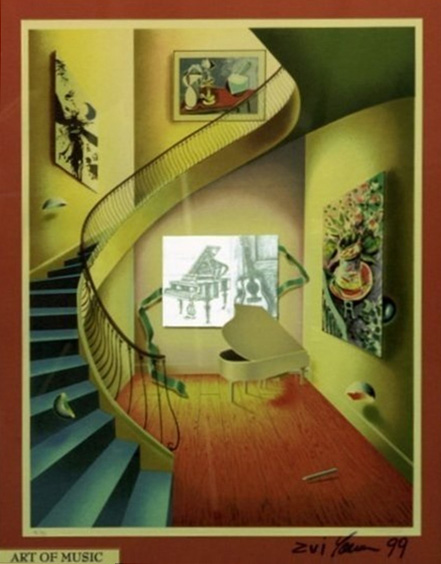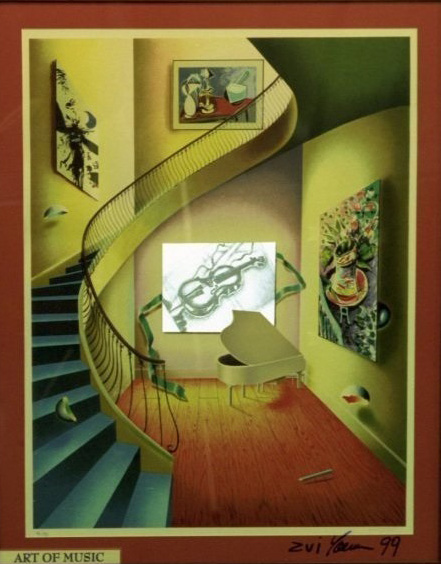Digital Windows
The Digital Windows Concept
I wanted to figure out a way that I could make images on canvases move, come alive, and present an ever-changing landscape or action rather than being fixed and immobile. To this end, I developed the concept of "Digital Windows" that would free an image from the restrictions of a two-dimensional static canvas or a three-dimensional static sculpture. My Digital Windows invention, presented as "A Method and Apparatus for Dynamically Changing a Pictorial Representation" (U.S. Patent 6,977,628), uses twenty-first century technology to add new capabilities to kinetic art.
A Brief Description of Digital Windows
Every piece of art has one or more dynamic focal points. These focal points are the places on the canvas that invite the use of kinetic capabilities. By providing an electronic display background at these focal points, one may transform static two- or three-dimensional artwork into dynamic, interactive forms. Digital Windows artwork combines art with continuously changing digital image technology on flat panel displays.
The flat panel display screens are actually inserted into an original work of art, lithograph, print, or sculpture at these focal points. This technique works not only aesthetically but allows the person viewing the art to interact with the art object itself. Digital interactions turn the viewers into participants in the artwork, allowing them to change the image in accordance with their own artistic interpretations and feelings. Of course, Digital Windows can also be used for commercial purposes.


Art of Music. The digital window shows changing images of musical instruments in the picture frame underneath the staircase. The Digital Window opens in a lithograph originally done by Ferjo.
A more complete description of Digital Windows is available in "My Life on the Mysterious Island of Nanotechnology" by Zvi Yaniv, available on Amazon.